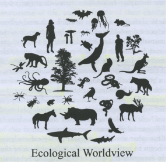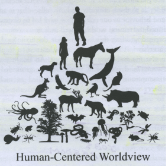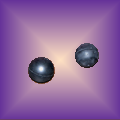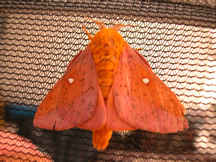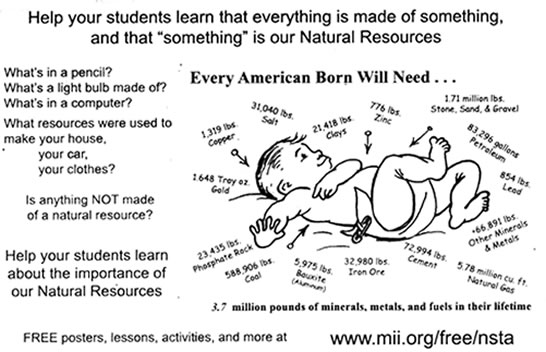Notebook
Investigations & activities with plans & learner journals
Last edited - December 16, 2025
Integrated activity plans
- Integrated curriculum - explores a truly integrated study or project or unit and how it relates to a school with an integrated curriculum philosophy. Information is presented as a school prospectus, which includes curriculum documents for an integrated philosophy, documents to plan and implement integrate studies, with a sample water themed unit or project.
- School subjects integration planning for a sound theme unit
- Integration of science dimensions for a sound theme unit
- Making healthy decisions for personal, social, and environmental health
- Ecosystems subject dimensions integration with a 5 E learning cycle & design a solution to maintain the health of ecosystem to include four areas: 1. Production of food,2. Regulation of water purification, 3. Habitat: necessary for the survival, and 4. Culture.
- Environmental Health & Making Decisions (middle grades) - integrates health, decison making, and enviormental science
- Outdoor education activities - some sample activities to do outdoors. Why people create and care for public spaces, parks, black bear simulation, mapping parks, light and temperature probe activities, orienteering, steps, team building activities, tree comparisons, tree data collection sheets, and calender suggestions for planning year around outdoor activities.
- Early child exploration activities: Introduction withs examples of how to integrate physical skills, observational sense, exploration, vocabulary literacy, and early science concepts. Activities are grouped around exploration of common objects and actions in young childrens' world: color paper, fasteners, construction activities,s sand, air, five senses, nature, dirt, music, animals, stores, space, light, plants water, and tools.
Science curriculum framework - elementary grades physical, life, earth science focus with integrated process, inquiry, perspectives, & attitudes
Inquiry activity plans
- Introduction of inquiry - Middle level investigations to explore observation, properties, variables, control, experiment, hypothesis, measurement, standard units, metric, pendulum. Inquiry with lab sheets.
- Activity 1 - Observations & properties
- Activity 2 - How do we make accurate observations?
- Activity 3 - Identifying properties & variables for cause & effect
- Activity 4 - Pendulum variables to discover cause & effect?
- Activity 5 - Predicting or hypothesizing
- Activity 6 - Experiment & Stretch your luck
- Activity 7 - Compared to what?
- Activity 8 - Standard measuring system
- Activity 9 - Water mass & volume ratio
- Activity 10 - Graphs as pictures
- Activity 11 - Swinging
- Living Organisms - Inquiry into what all living organisms have in common.
- Challenges - 70+ science & STEM projects & challenges for Project based learning (PBL) & Challenge based learning (CBL) plus
- Discusses challenges, problems, & discrepant events
- Explores instructional characteristics for project based learning (PBL) or problem based learning, and challenge based learning (CBL) commonly used with challenges, discrepant events, problems, and projects, along with supporting research.
- List of questions & ideas to explore or investigate
- Challenge to explain prehistoric tracks. Uses a sequenced set of three pictures of ancient tracks. Includes additional pictures and references of tracks.
Science cross cutting activity plans
Order & Organization activity plans
Classification
- Introduction to a dichotomous key 3 activities
- Kingdoms & their phylum diagram
- Tree anatomy & classification information
- Leaf identification guide for decidous trees
- Activities to introduce identification & classification with insects - activities for naming & organizing organisms. Includes: What's in a name & classification; Insect collecting & identification; Make an insect model; & Insects as a phylum; More detailed information on arthropods - Insect facts, identificationkeys, insect orders bee model & pollination activity, spider & insect information, comparison of spiders & insects, insect & spider containers, spider island, suggestions for collecting insects, mounting insects, and info on crustaceans, myriapods, and an outline for a sequence of study
- Fungi & lichens fact sheet with classification information
- Animal classification Bingo game - This page includes a list of vertebrate animals in categories to use to make a bingo game, - cut them out, mix them up, & sort them in different categories ... a checksheet to compare amphibians & reptiles, & a sample of the list of animals as sorted by Apple AI.
Evidence, Explanations, & Models activity plans
- Asking investigation questions - water balloons
- Cause & effect - Early childhood activities swinging, push pull, card game
- Discrepant events activities to collect evidence to discover & communicate explanations
- Evidence - unit with plans & activities for: Light & heat, sound as vibrations, hot & cold insulators, rock hardness, mold, & taste buds that focus on evidence.
- Evidence, explanations, & diagrams as models to explain Light - unit plan for grade four+
- Graphing as explanation - Data analysis, variables, relationships, & graphing summary sheet
- Observation
- Senses - Many activities for the five senses with sense words introduct. Relates senses to observation & properties
- Observation Little book to record observations of small objects with naked eye (actual size) & magnification.
- Observation Record sheet
- Observation - Blue jeans: investigation, texture, size, seams, weaving
- Observation - Measurement as an observation, how to measure, properties to measure, & measurement procedure worksheets
- Observation - Power poles observations & measurement
- Observation & inference - Challenge to explain Prehistoric tracks Uses a sequenced set of three pictures of ancient tracks & references of more track activities. Also includes additional pictures to explore and explain.
- Observation & inference
- Front or back view
- Four day observation of two images & one with old young illusion
- Snow White comic
- What's up or down images
- Relative size images
- Bouncing spheres video - observation & inference
- Activities to observe & record properties of water as one state of matter. Properties of how it takes up space, (volume), mass, exerts pressure, flows through space, its attraction to itself and to other particles, and its energy as measured by temperature.
Model activity plans
Models have explanatory and predictive power (physical objects, plans, mental constructs, mathematical equations, computer simulations...) that may or may not be observed with real objects, systems, and events. They are created with information collected from observations, facts, laws, inferences, thought, and reasoning. They represent systems or things and are used to provide an explanation.
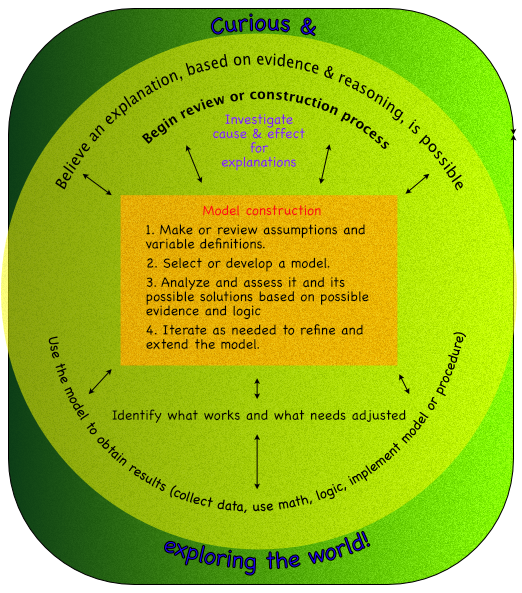
Models - actvities & plans include black box, mystery pipe, insect condominiums, expanding universe, Earth changes, earthquake, recycled water, glaciers, hum dingers, drought stopper, fog chamber, cloud, go carts, cart tricks, electric circuits, & moon craters. Background information for models & modeling process.
- Model - Cell models - cell organalles & functions, animal & plant cell models, their organalles & functions, cell cycle, & mitosis includes activity plan
- Model - roller coasters & ball runs
- Model - down hill cars & roller coaster vehicles
- Model - space & solar system - size & scale activities
- Open source 3D models
- Model - insects with lesson plan, supporting materials, & pattern
More information on model concepts in the literate section of models in the science processes knowledge base.
Change, Constancy, & Measurement activity plans
- Measurement - primary level introduction to linear, volume, mass, & temperature
- Measurement: middle level review of linear, mass, volume, measurement of matter, with an introduction to density with directed inquiry activities & blank student lab notes
- Observation & measurement - How do we observe? properties to observe, change, measurement, properties to measure, & measurement procedure work sheet
- Cookie crumble challenge - Conservation of weight to investigate the weight of a cookie before and after crumbling. Also how many chocolate chips in a bag of cookies challange.
- Density - learning cycle inquiry activities for middle grade to apply measurement: linear, mass, volume, of matter to calculate density of solids, liquids, & gases. Includes 14 activities with lesson plans & lab sheets.
- Motion - spinners, tops, zoomers, twirlers, rolling wheels, rolling cups, rolling spheres
- Cartography map making, angle measurement, compass, clinometer, measure height, measure distance, locating objects with distance & angle combinations, contour maps,
- Measuring heights of trees & other objects - clinometer, shadows, scale (Biltmore) stick
- Shadow measurement - use shadows to find relationships between tirangles
- Calculating Earth's circumference using Eratosthenes method during a solstice - Background information & worksheet with instructions.
- Relative Position & Motion - integrated science sample sequence for 4th grade and above
- Cartography - maps, measurement, degrees, height, clinometer, orienteering
- Shadow on the playground - lesson plan & notes for first grade & up activity
- Observations & inference - plan to introduce or review observation, inference, & relative postion. Includes images
- Tracks - animal tracks, make observations & inferences of ancient tracks activity
- Rolling spheres & their tracks - lesson plan
- Relative position puzzles
- Video on solar system and earth relative position & motion ... rotation, revolution, and the seasons - see also space ...
- Images to explore up and down
- Outdoor education activities
Evolution & Equilibrium activity plans
- Pressure and Equilibrium - explore air, water, balloons, fizz keepers, and two-liter plastic bottles | Plastic bag with water piercing |
- Evolution and natural selection - marbles in a bucket activity
- Animals 1 - feathers, beaks, meal-worms,
- Animals 2 - camouflage moths, simulation activities, echolocation, penguin - temperature
- Adaptation - Meal-worms, bird beaks, feathers...
Form & Function activity plans
Physical science activity plans
- Air & water - as matter, occupies space, & pressure
- Balance and stability - activities & plans
- Balloon Piercing | Plastic bag with water piercing |
- Bubble exploration - 12 activities with plans: bubbles in the air, under water, on a surface, anti bubbles, big bubbles, little bubbles, Alka-seltzer bubbles, measuring bubbles, color of bubbles
- Chemistry - lab notes for activity to model atoms, elements, & compounds with nuts & bolts.
- Los Alamos national laboratory electronic periodic table of elements
- Colored Water - mix different liquids to explore the properties of matter, mass, density, & more.
- Density - learning cycle inquiry activities for middle grade to apply linear, mass, volume, measurement for matter, to introduce density of solids, liquids, & gases. Includes 14 activities with lesson plans and lab sheets. Includes pop can float, wood, metal, plastic, gas, assorted materials, cubes, spheres, population of school rooms, cross cutting concepts measurement, change, properties, variables, operational definitions Assessment data base for density related concepts
- Dancing raisins - video of dancing raisins, plans with suggestions to practice interview & questioning strategies
- Cartesian diver - Activity plan with a general discussion on how to modify activities, a video demonstration, longitudinal examples of learner's explanations of how Cartesian divers work with operational definitions for several levels from novice to expert, sample challenges, & questioning and interview suggestions with a focus on wait-time while learners explore a Cartesian diver.
- Electrical circuits - A middle level study of electricity and magnetism. Activities start with a historical static influence. Moving to understand current electricity in a simple closed circuit (bulb, battery, & wire) by creating a model that explains the energy transfer from source to receiver. Continues to circuit tester, multiple sources & receivers in parallel and series, resistance, make a switch, electical puzzles, electro magnetism, & electro scale.
- Electricity - static electricity
- Force, mass, and movement activities - List of activities - motion, gravity, relative position & motion, roller coasters, ball runs, simple machines, & structures & bridges
- Gravity, acceleration, inertia, friction - includes link to moon feather hammer experiment
- Heat
- Heat and energy transfer - teacher directed plan with lab notes to explore: hot & cold with touch, variety of activities using water, mixing hot & cold water, warming ice water to boiling, salt & ice, temperatures of cars in sunshine, blowing hot & cold bubbles, conduction, convection, & radiation.
- Heat energy and conservation - candle & heat challenge, combustion, & fire triangle
- Temperature & thermometers - A motivational challenge to explore how to measure temperature and decide on a degree of accuracy. Thermochromatic materials are introduced and used to increase interest and focus.
- Hoop & bottle challenge - force, motion, Newton's laws of motion
- Kitchen science - food groups, fat test, acid test, sugar test, yeast
- Matter
- Air - air & water exploration of matter, occupies space, & pressure
- Balloon Piercing plan | Plastic bag with water piercing|
- Bubble exploration - 12 activities with plans: bubbles in the air, under water, on a surface, anti bubbles, big bubbles, little bubbles, Alka-seltzer bubbles, measuring bubbles, color of bubbles
- Colored Water - mix different colored liquids of different densities
- Density - see physical science density
- Heat - see heat
- Liquid properties - Water, balloons, and other solid, liquids, & gases to review / assess the properties of solids, liquids, & gases; The shapes of liquids; Surface level of liquids; Properties of liquids; Density of liquids & Oobleck, solid, or liquid?; Colored drops in water; Colored drops in different liquids; Mixing colored drops from four different solutions - Teacher preparation of materials REQUIRED; Colored drops in different temperatures of water; Mixing without mixing & discovery Exploration of different volumes and temperatures of water; Water Drops Water Drops on a Coin; Pepper in the Plate; What is "Surface Tension"?; Soak Those Sharks; How a Plant Carries Water; The S.S. Paper Clip
- Mixtures - Solid, liquid, filter, solutions
- Pressure and Equilibrium - explore air, & water, with balloons, fizz keepers, and two-liter plastic bottles | Plastic bag with water piercing |
- SOAP-BUBBLES and the Force which mould them. - first book on soap bubbles.
- Solid, Liquid, Gas -
- Evaporation and Condensation -
- Liquids - properties, liquids, ooblick
- Sound unit - for fourth grade including notes on its development
- States of matter properties chart
- Surface tension 1 - Paper clips and coins in a cup full of water, Drops on coins, floating objects, plain water, soapy water
- Surface tension 2 - coins in a cup full of water. surface tension, pepper in water, tooth pick attract.
- Temperature by touch - Developing explanations for why different objects feel as having different temperatures.
- Temperature - A motivational challenge to explore how to measure temperature and decide on a degree of accuracy. Thermochromatic materials are introduced and used to increase interest and focus.
- Water - water & air exploration of matter, occupies space, & pressure
- Motion
- Motion - unit of study with spinners, tops, zoomers, twirlers, rolling wheels, rolling cups ,& rolling spheres activities
- Rolling Spheres - inquiry unit that focuses on observation of sphere tracks
- Relative Position & Motion - science unit plan that integrates science content, processss, and inquiry dimensions for observatin, inference, relative position & motion, energy transfer, & force.
- Motion, force and simple machine activities with K'Nex
- Motion roller coasters & ball runs -
- Light
- Light - unit plan for grade four a & up, activities to collect evidence & reason abou the properties of light. Make diagrams & models. Activities include: How light travels, explore flat mirrors, string mirror apparatus, mirror puzzles, bouncing light & text reflections, refraction & liquids, bent pencil, appearing coin, lens & different liquids in cylindrical containers, lens & two slit beams, lens & candle, sight & eye , pin hole camera, light & color - white light through colored filters, colored objects in colored ligh, colored paper reflections, mixing colored light, light, shadows, & their shapes, light, shadows, & their properties, analysis of light, shadows, & highlights in works of art, light & shadows of different colors, reviews - prisms & light, water lens, turning colored light - white, making fire from light
- Magic penny - video to show light refraction
- Light - optical illusions - Unit plans, activities, & supporting information for activities: Go (red) - Stop (green) color illusion; Hello Red Fox by Eric Carle; Zoomer & tops for color blending, zoomers & pencil flipper for bird in cage illusion; filter light; shadows, black, white, gray illusions; rotoscope; perspective & warped window illusion; & flip book with plane looping.
- Light - unit plan for grade four a & up, activities to collect evidence & reason abou the properties of light. Make diagrams & models. Activities include: How light travels, explore flat mirrors, string mirror apparatus, mirror puzzles, bouncing light & text reflections, refraction & liquids, bent pencil, appearing coin, lens & different liquids in cylindrical containers, lens & two slit beams, lens & candle, sight & eye , pin hole camera, light & color - white light through colored filters, colored objects in colored ligh, colored paper reflections, mixing colored light, light, shadows, & their shapes, light, shadows, & their properties, analysis of light, shadows, & highlights in works of art, light & shadows of different colors, reviews - prisms & light, water lens, turning colored light - white, making fire from light
- Magnetism & magnets - activities & lesson plan for a unit on the properties of magnets. Explore magnets, magnetic materials & non magnetic, magnetism through different materials, strength of magnets, iron filings to explore magnetic poles & magnetic fields, rules of attraction, strength of magnets, fish and clips, holding power of multiple magnets, & floating magnets
- Measurement: middle level review of linear, mass, volume, measurement of matter, with an introduction to density with directed inquiry activities & blank student lab notes
- Mixtures - Solid, liquid, filter, solutions
- Pendulumm - Introduction of inquiry - Middle level investigations to explore observation, properties, variables, control, experiment, hypothesis, measurement, standard units, metric, pendulum. Inquiry with lab sheets.
- Physics: Matter, energy, waves, & particles notes
- Pressure and Equilibrium - air & water exploration with balloons, fizz keepers, and two-liter plastic bottles | Plastic bag with water piercing |
- Probes - experiments that use electronic probes and data collecting software
- Propulsion -
- Rolling Spheres - relative position & motion inquiry unit, focuses on sphere tracks
- Relative Position & Motion - sample science unit plan with science dimensions integrated
- Outdoor education activities
- RubberBandOlogy - elasticity & inquiry activities
- Simple Machines - A unit with plans, to review or develop a beginning understanding of simple machines through science explorations. Simple machines introduced: inclined plane, lever, & pulley.
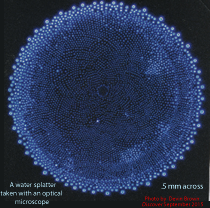 Levers - Unit with activities to develop a deeper understanding of levers. Includes three classes of levers and concepts for physical science, inquiry, & science habits of mind.
Levers - Unit with activities to develop a deeper understanding of levers. Includes three classes of levers and concepts for physical science, inquiry, & science habits of mind.- Levers - Unit for sixth grade and up to explore three classes of levers, determine the reationship between the effort - load, and mechanical advantage.
- Simple machine activities with K'Nex - Examples of incline plane, measure distance from different heights, pulley, free pulley, screw, grain auger, super ball track, equal arm balance, bridges, cooperative building, team building
- SOAP-BUBBLES and the Force which mould them. - first book on soap bubbles.
- Solid, Liquid, Gas -
- Evaporation and Condensation -
- Liquids - properties, liquids, ooblick
- Air & water - exploration of matter, occupies space, & pressure
- Sound unit - for fourth grade, includes notes on its development
- States of matter properties chart
- Static electricity -
- Structure - Notes on relationship of walls & roof. Related to Minds of their own series.
- Surface tension 1 - Paper clips and coins in a cup full of water, Drops on coins, floating objects, plain water, soapy water
- Surface tension 2 - coins in a cup full of water. surface tension, pepper in water, tooth pick attract.
- Temperature by touch - Developing explanations for why different objects feel different temperatures
- Temperature - A motivational challenge to explore how to measure temperature and decide on a degree of accuracy. Thermochromatic materials are introduced and used to increase interest and focus.
- Water - absorption, cohesion, adhesion
- Water - explores its properties as one state of matter. Properties of how it takes up space, has volume, mass, exerts pressure, flows through space, its attraction to itself and to other particles, and its energy as measured by temperature. Activities include:The shapes of liquids; Surface level of liquids; Properties of liquids; Density of liquids & Oobleck, solid, or liquid?; Colored drops in water; Colored drops in different liquids; Mixing colored drops from four different solutions - Teacher preparation of materials REQUIRED; Colored drops in different temperatures of water; Mixing without mixing & discovery Exploration of different volumes and temperatures of water; Water Drops Water Drops on a Coin; Pepper in the Plate; What is "Surface Tension"?; Soak Those Sharks; How a Plant Carries Water; The S.S. Paper Clip
- Water cycle - condensation, transpiration, percolation, absorption, condensation

Life science activity plans
- Anatomy - See Human anatomy & health resources & activities
- Anatomical Positions & positional vocabulary - diagrams using dog model
- Anatomical Positions & positional vocabulary - diagrams for human anatomy
- Anatomical positions for veterinarian science - dog diagram
- Animals in the classroom
- A unit plan for pets in the early grades: gerbils, responsibility, habitat, movement, seasonal adaptations, classification, food, & zoo trip with concepts and outcomes threaded to National Standards
- Also includes resources with suggestions about handling and observing animals.
- Animal classification - This page includes a list of vertebrate animals in categories to use to make a bingo game, - cut them out, mix them up, & sort them in different categories ... a checksheet to compare amphibians & reptiles, & a sample of the list of animals as sorted by Apple AI.
- Animals & fungi in my neighborhood & maybe beyond - Copy and paste this journal to make your own guide and journal for field investigations of outdoor environments in your neighborhood, school yard, or park. Includes suggestions to study insects, ants, spiders, mammals, birds, earthworms, fungi, how to make a Berlese funnel, & more. Or provides support for a place based field-based experience with notice, wondering, and should we questions to investigate framework.pdf.
- Animals - camouflage moths, simulation activities, echolocation, penguin - temperature
- Arthropods (insects, spiders, crustaceans, & myriapods) - Insect facts, identification keys, insect orders, Bees, bee model, & pollination activity, spider & insect information, comparison of spiders & insects, insect & spider containers, spider island, suggestions for collecting insects, mounting insects, and an outline for a sequence of study
- Birds learning sequence beaks, adaptation, & form & function - teacher activity for preservice and inservice teachers to explore and reflect on four kinds of learner assessment (diagnostic, formative, summative, & generative) in instruction.
- Bird guide online Cornell lab of Ornithology
- Cells - activities & plans for cells their organalles & functions, animal & plant cell models, cell cycle, & mitosis model
- Community - Unit with lesson plans & activities to explore different environmental communities
- Dinosaurs - Activities about foot prints, body size, and bones
- Earth worms and soil -
- Environmental education & sustainability - Historical perspective of environmental education, state of environmental education, ICEE findings & recommendations, suggestions to help teachers become environmentally savvy, teacher's views of their needs, sample program goals, scoring guide for environmental concern, suggestions to assess curriculum, dtudent environmental knowledge, misconceptions, teaching resources, & six questions & answers about environmental education
- Environmental - A sequence of plans or unit with activities and lab notes to facilitate a review and develop a deeper understanding of environments and environmental factors that are necessary to support life. Activities explore environmental factors of water, temperature, light, and chemical fertilizer with bean plants, shrimp eggs, isopods, and land snails.
- Community - A unit or packet with a sequence of activities & plans to develop a deeper understanding of the relationships of organisms & populations as communities within environments. Includes hands-on activities with plants, seeds (embryo, cotyledon, & seed coat), crickets, anoles, decomposers, and terrariums.
- Ecosystem - A unit or project with a sequence of activities & plans to develop a deeper understanding of the interdependence required to maintin healthy ecosystems. Investigations include study of environmental factors, organisms and their needs, populations, communities, life cycles, food webs and energy cycle, water cycle, carbon dioxide - oxygen cycle, nitrogen cycle, and decomposition.
- Air, Earth, & water quality Vs. pollution - Activities and resources recent history of a lake or river, climate change, global warming, & other pollution related resources
- Pollution activities - sequence
- Sustainable notes
- Human & environmental health - unit with plans, activities, & lab note book. It includes beneficial and detrimental environmental affects on health and how influences impact the decisions people make. Reasoned decisions and decisions made subconsciously and emotionally without sufficient critical thinking.
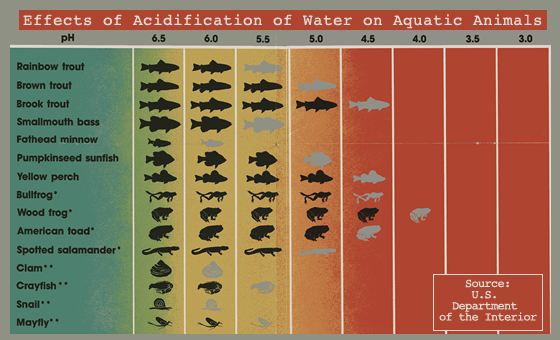
- Field based experiences to investigate animals & fungi in your yard, neighborhood, & beyond
- Fossils - 3D open source models
- Fungi & lichens fact sheet with classification information
- Gardening - Let's Move - school garden checklist
- Genetics - Punnett Square for Sickle Cell disease and theoretical and experimental probability - Student work sheet
- Grasslands annotated resource list & notes on Nebraska Sandhills
- The Saga of Great Lake or Big River - historical fiction story of a river or lake to motivate discussion, exploration, & more ...
- Growth - plant growth and mathematics
- Human & animal comparison - focus questions, investigation ideas, & supporting resources
- Insects - activities for naming & organizing organisms. Includes: What's in a name & classification; Insect collecting & identification; Make an insect model; & Insects as a phylum; see also arthropods
- Leaves, needles, & twigs
- Living Organisms - activities for: What do all living organisms have in common?
- Make a dolphin - problem for energy chain or food chain or food web, Use what dolphins eat to make a dophin, & use a model (Source: Science July 2024) to explain how rat poison can affect other organisms.
 Identify plants & animals with Seek! The Seek user guide will assist your explorations of nature. Then use Nature's notebook to track their changes.
Identify plants & animals with Seek! The Seek user guide will assist your explorations of nature. Then use Nature's notebook to track their changes. Track the changes of plants & animals and the timing of their seasonal activity in your yards with the Nature's Notebook program. Flexible for K-12 students to learn about phenology and plants and animals.
Track the changes of plants & animals and the timing of their seasonal activity in your yards with the Nature's Notebook program. Flexible for K-12 students to learn about phenology and plants and animals. - Nebraska Sandhills - notes
- Nutrition - Food Guide Pyramid criticism
- Plants - framework for teaching plants in elementary grades, support materials for flowering plants - anatomy of leaves, stems, trunk, ...
- Soils and trees - explore types of soils for water absorption, compaction, penetration,
- Trees
- Tree growth units, activities, plans, lab notes. Primary & middle level to compare planning for the same topic
- Tree growth - activities to observe trees, notice changes, & make operational definitions to explain environmental causes for the changes. Primary level plan
- Trees - Growth, tree rings, environmental factors - Middle Grades
- Leaf identification guide for decidous trees
- Leaf identification guide for evergreen (conifer) trees
- Twigs
- Trees - observing, measuring heights, & finding patterns & relationships (clinometer & lumber scale (Biltmore) stick)
- Tree growth units, activities, plans, lab notes. Primary & middle level to compare planning for the same topic
- Vaccination fact sheet
- Veterinarian science anatomical positional vocabulary
- Wood - Notes on what makes wood heavy. Related to Minds of their own series.
- Surface tension
Human Health & Anatomy activity plans
- See also Health & human anatomy for middle school, activities, plans & resources
- Anatomical Positions for Human Anatomy diagram
- Anatomical positions for veterinarian science - dog diagram
- Bones - the human body, skeletal system
- Bones - Learners measure body parts and compare their ratios to height and the use of ratio in Egyptian art, Greek sculpture, also link to CSI role play.
- Ears - informational article & data sheet about the ear & its parts
- Eye - data sheet for eyes
- Genetics - Punnett Square for Sickle Cell disease & theoretical & experimental probability - Student work sheet
- Health
- Human & animal comparison - focus questions, investigation ideas, & supporting resources
- Nutrition and food investigations for: calcium & bone investigation, food label identification, starch investigations, milk investigation of proteins casein and whey, protein testing, mineral tests, fat tests, eggs & protein investigation, acid in food investigation, sugar in food investigation, energy in food, calorimeter
- Personal health - inventory & notes
- Reaction times, practice, & learning activities
- Senses - Many activities for the five senses with sense words introduct. Relates senses to observation & properties
- Transportation - blood, respiration, circulation,
- Vitamins - History of the discover of 5 vitamins and the science practices & processes used to discover them
- Vaccination fact sheet
- Word roots. Greek, Latin and other word roots for medical & anatomical terms
Personal food computer
Earth, Atmosphere, & Space Links activity plans
Earth activity plans
- Constructive forces shaping Earth - Geophysical forces are considered as constructive and destructive. Landslides, Constructive geophysical forces are forces that tend to build up new landforms. Examples include deposition, volcanic eruptions, and tectonic plate movement.
- Earth - Limestone & acid, erosion, crystals
- Earth - Erosion - water, wind, ice (glacier), temperature, chemical, mountain building
- Earth Materials -
- Earthquake -
- Richter scale - info about Charles Richter, his scale, & more Earth science ...
- Model for earthquake
- Calculating Earth's circumference using Eratosthenes method during a solstice - Background information & worksheet with instructions.
- Erosion - A sequence of plans to facilitate a review and develop a deeper understanding of erosion and landforms. The constructive and destructive forces that shape them - water, wind, ice (glacier), temperature change, chemical, & a mountain building activity.
- Soil and Earth Worms -
- Pollution - air - land - water
- Rocks grades 1-2*
- Rocks grades 3-4*
- Rocks grades 6-8*
- Rock cycle -
- Soil and plants grades 3-8* - Soil characteristics necessary for plant life; Inquiry - Observation, properties, variables, & evidence
- Streams and rivers * Water leaves footprints: Activities to model the effects of slope & volume on erosion & channeling.
- Volcanic hot spots create island chains video (2:14) like the Hawaiian Islands.
- Water cycle -
- Watershed*
Atmosphere activity plans
- Climate change - NASA online lab with lesson plans
- Weather - clouds, rain, & the water cycle
- Weather - comprehensive outline of concepts and activities, no instructional suggestions
Space activity plans
- Relative Position & Motion - sample integrated science sequence see also measurement ... and Images to explore up and down
- GPS (Global positioning service) - Current and history of GPS and Cell phone mathematics - The story of how Brad Parkinson who used creativity & mathematics to enable cell phones.
- Video on solar system and earth relative position & motion ... rotation, revolution, & the seasons
- Make a scale model of the Solar System & discover a definition of space
- Activities (5E learning cycle) to explore the size and relative position of the solar system aligned to the Common Core Standards, Next Generation Science Standards, National Science Education Standards, & 21st Century Skills: critical thinking, communications and measurement.
Science perspectives activity plans
Technology activity plans
Personal activity plans
- Kitchen science - investigations include food groups, fat test, acid test, sugar test, yeast
- food fat test, acid test, sugar test, yeast
- Nutrition - Investigations include calcium & bones, labels, daily diet, starch, milk protein, minerals, fat, egg,s acidity, sugar, energy, vitamin C
- Anatomy - all things human anatomy
- Environmental, community, & human health
- Vitamins - Great vitamin mysteries for a healthy you
Social activity plans
History of Science activity plans
- History and Nature - rainbows, colors in plants, plant dyes
- History of the discover of 5 vitamins and the science practices & processes used to discover them
- Science, math, & technology timeline
Nature of Science activity plans
More on nature of science
Design process
A comprehensive design process has many ideas that can be used to guide design. However, the use of different ideas depends on the problem and the design being considered.
With a process that is sorta linear, sorta cyclical, and sorta random. Meaning it can be started at any point and move to any other point a designer or team desides to consider next.
There is no magic number of steps or ideas to be included in a process, but it is helpful to start with four or five ideas and add more or subtopics, as we become familiar with design.
A basic design with five steps and a more comprehensive process follows:
A five step design process includes
- Ask: - What is the problem?
- Empathize - consider others’ needs beyond solving the problem. (Ask)
- Define the problem and create meaningful and actionable problem statement. (Ask)
- Imagine solutions - encourage innovation throughout brainstorming. May be helpful to remember that any design is culture-bound and visual memories are very influential. creative design may be found outside one's culture or altering a known visualization. Visualization is necessary in engineering. Visualize and draw.
- Iterate prototypes - identify and develop a best solution through multiple iterations. (Research, identify, design, draw, evaluate, solution, prototype)
- Test - evaluate prototypes and consider improvements. (Test, redesign, redraw, create or make the solution)
- Present & communicate the solution - draw, model, and explain.
A more comprehensive representation of the design process:
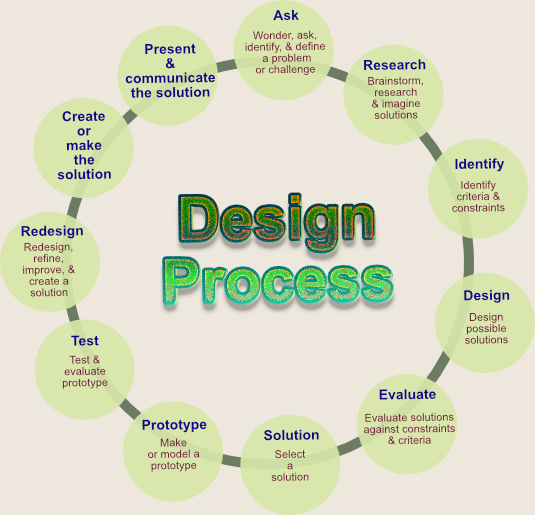
It's important to remind yourself that an important part of engineering is changing designs based on testing.
Design problems
- Design error
- Operator error
- Poor maintenance of vital parts
- Complex combination of risks
Science pedagogy & professional development tools for educators
Science is important for the education of all, however, it is not the only purpose of education. It is important connections between overall education and science education are strong, if we are to achieve the best outcomes for our learners. While there are many connections that can be made with the following tools, more general information is available on the pedagogy section of this site.
Science education
- Essay Thinking about Science Education - Clyde Freeman Herreid
- Science books & articles for professional development - annotated list
- Principled procedures to guide decision making
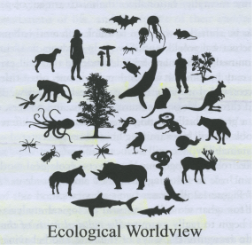
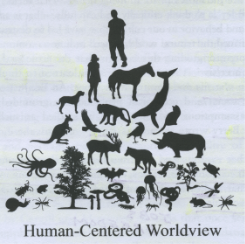
Nature of science
An overview of the nature of science is illustrated in the map, near by. The articles below explore it and its different dimensions in different ways. Enjoy!
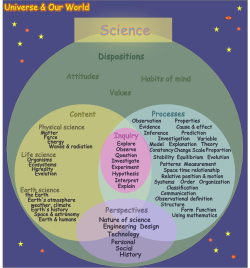
- What is science, science literacy, nature of science (NOS) - what professional educators need to know about science. Definitioins of science, questions for NOS, discussion of NOS questions, anxiety survey with suggestions.
- When teachers talk about inquiry they are usually refering to one of three kinds of inquiry. Review the three kinds in the overview.
- Personal relationship to science - Personal science exploration story
- Personal relationship to science and technology - MacCready article
- See also unpacking science
- Process of profesional development for science educators
- Science for All Americans - Project 2061 at AAAS.
- Science for All Children - on line at the National Academies Press
- Visualization
Learners - development of scientific literacy as intended learning
- Learning theory
- Teaching for Conceptual Change - Kappan article
- Fish is Fish - picture book and how people learn
- Explore a The Secret Under my Skin and explore these questions to reflect on teaching and learning how to learn.
- Physical Skills Necessary for Exploration
- Words to describe observations through all senses
- Development & recognition of science talent
- Frequently asked science interview questions FAC's
- Private Universe - 4 video series on construction of science ideas, video access & study sheets
Planning science
Unpacking intended learnings for science literacy
Tools to identify big ideas, generalizations, standards, benchmarks, concepts, facts ...
- Concept measurement unpacked - K-8
- Concept science inquiry unpacked - preschool to literate
- Properties of matter unpacked
- Mapping unified processes & cross cutting concepts into content areas examples include - electricity, seeds, matter and solutions blank,
Unpacking to combine contectual areas
Planning that brings together intended learnings & educational strategies
- Research and applications for planning Environmental education ideas, lessons, units, & curriculum elements
- Planning framework - includes categories with explanations
- Creation of concept map across grade levels (K-8) for magnetism, unpacking standards, connecting concepts to child's understanding and outcomes
- Inquiry - describes range of inquiry empowerment as combinations of teacher - student centered & relates them to different instructional methods. Also includes samples of instruction for the seven combinations.
Instructional methods & models, & strategies to faciliate science literacy
General teaching model ------- General Planning - pedagogy page.
Inductive teaching model -
- Learning procedure & cycle of learning
- Variables for learning
- Explanations for learner's thinking as naive understandings or misconceptions
- Video of traditonal electrical circuit Learning Cycle lesson
- Teaching Syntax, Models, Strategies, & Procedures
- Learning cycle - As an Instructional Theory
- Learning cycle - Relative to a constructivist learning theory
- Learning cycles - Five different with instructional and learning theory notes
- Learning cycle - who does what? students or teacher?
- Learning cycle lesson summaries to review and make suggestions to improve as hands on and constructivists
- Support for | facts concepts and generalizations || Disequlibration | standards concepts outcomes |
- Questioning srategies
- Direct instruction procedure
- Cooperative learning resources
- Article comparing direct instruction and the learning cycle
Plans & materials to guide teaching & learning
The Investigations page has lists of activities, lessons, unit, & packets for to facilitate science literacy. Resources below are provided for planning and professional development.
Sample plans
Assorted planning resources
- Challenges also includes Projects & Challenges for Project based learning (PBL) & Challenge based learning (CBL)
- Discrepant Events
- Learning about Acid Rain. A Teacher's Guide
- Teacher guide for evolution - Source - Project 2061 AAAS
- A study finds exposure to more comprehensive evolution teaching improved the probability of accepting evolution in adulthood, but did not affect political beliefs or religiosity. It also increased the probability of working in the life sciences as an adult. Source
- Field trip planning and management suggestions
- Format for an evidence based argument
- Data analysis, variables, relationships, and graphing notes (line graphs)
- Groups and self evaluation sample .
- Rubrics and scoring guides.
Safety resources
- Science fairs - Judging suggestions, scoring guide construction suggestions, & sample investigation scoring guide / rubric.
- Science career related information - List of Science Careers
- Interview Questions for Scientists
- Scientists - List of Scientists - Scientist MacCready photos to go with his story
- Standards documents
Assessment
Assessment and evaluation tool
- General assesment tool box
- Inquiry & investigation scoring guides and rubrics
- Instructional Indicators Lesson Planning Check List
- Evaluation simulation - includes assessment scenario with assessment and simulated student assessments to evaluate
- Assorted scoring guides and rubrics
Instructional assessment to evaluate instruction or facilitation of student learning
- Teaching science assessment and reflection suggestions on instructional practices
- Inquiry student observation based
- Inquiry environmental observation based
- Inquiry teacher observation based
- Professional portfolio development
Other Instructional Information
- Professional Development: Technology - Using the computer for: photos, audio, and video --->>> directions and tutorials...
Advocacy for Freedom of Information
- The Center for Digital Democracy (CDD) is recognized as one of the leading consumer protection and privacy organizations in the United States.
Year curriculums
* Lola Way K-8 science curriculum 1947 historical document
- Parts and pieces for yearly curriculums
- Yearly curriculum framework for elementary grades - life, physical, earth dimensions with inquiry, process, and other dimensions integrated
Framework for elementary science curriculum
Life science - concept & outcomes
Grade 1 -
- Organisms - Plants & animals - Living organisms - Animals as pets -
- organism
- birth death
- habitat
- food web
- detritus
Grade 2 -
- Life cycles - Tree rings -
- growth
- development
- life cycle
- genetic identity
Grade 3 -
- Population - Animals on the lawn - Make a dolphin - Plant growth - adapted by using strips of paper to graph growth
- food chain
- plant eater
- animal eater
- biotic
- potential
- generation
- plant and animal
- metamorphosis
- food web
- community
- predator-prey
Grade 4 -
- Environment unit of study -
- Trees -
- Classification -
- Bird beaks adaptation -
- Animal classification game - vertebrates -
- Animals Form & Function -
- Plants support materials -
- Tree rings -Earth - soil & plants
- environment
- environmental factor
- range
- optimum range
Grade 5 -
- Communities unit of study - Insects - Arthropods - Bees and pollination -
- photosynthesis
- community
- food
- transfer
- producers
- consumers
- decomposers
- raw materials
Grade 6 -
- Ecosystems unit of study - Water cycle -Outdoor activities - Plant growth - Fungi -
- ecosystem
- water cycle
- food-mineral cycle
- oxygen-carbon dioxide cycle
- pollutant
- Health and the environment unit of study - more health activities
Physical science - concept & outcomes
Grade 1 -
- Material objects - Senses - Activities - ( Little objects book) -
- object
- serial ordering
- property
- change
- material evidence
Grade 2 -
- Interaction and systems - Motion unit: Spinners: tops, zoomers, twirlers, rollers: wheels, wheels & axles, cups, & spheres
- Measuremnent (first straw ...) - Balance: Stable or unstable -
- interaction
- evidence of interaction
- system
- interaction-at-a-distance
Grade 3 -
- Subsystems and variables - Rolling spheres - Mixtures - Measurement - Bubbles - Water: matter water liquid -
- subsystem
- evaporation
- histogram
- solution
- variable
Grade 4 -
- Relative position and motion
- Observation Vs. inference - Sound -
- reference object
- relative position
- relative motion
- polar coordinates
- rectangular coordinates
Grade 5 -
- Energy sources - learning unit - Light, shadows, & color - Motion roller coasters ... - Matter - Mixtures & solutions -
Energy transfer: Heat & temperature
- enérgy transfer
- energy chain
- energy source
- energy receiver
Grade 6 -
- Introduction to science inquiry processes (methodology)
- Models: electricity & magnetic interactions
Learning units for Electricity - Models - Magnetism - Density - Chemistry: Molecules, atoms, elements, & compounds -- scientific model
- electricity
- magnetic field
Earth science - concept & outcomes
Grade 1 -
- Earth objects -
- Senses - Activities - ( Little objects book) - Erosion
- Rocks observation & properties
- Solar System Size & Scale K - 4th Grade Lesson

Grade 2 -
- Interactions of earth objects -
- Solar System Size & Scale K - 4th Grade Lesson

Grade 3 -
- Subsystems & variables with earth materials -
- Watersheds - what is a watershed & variables that affect them
- Soil & plants -
- Solar System Size & Scale K - 4th Grade Lesson

Grade 4 -
- Earth's motions -
- Erosion
- Rock properties - inquiry: observation, evidence, classification, and reasoning to explain & understand
- Earth, planets, solar system -
- Earth movement video - Class of students video ...
- Build a solar system
- Solar System Size & Scale K - 4th Grade Lesson

Grade 5 -
- Earth's energy systems -
- Rock cycle - Inquiry into rock properties & how they are made. Uses Inquiry processes of observation, evidence, and reasoning to understand different kinds of rocks.
- Volcanism video - What causes volcanoes? How do volcanoes chape mountain ranges?
- Watersheds: streams, rivers, floods - Stream tables to model the effects of slope and volume on erosion and channeling
- Weather unit -
- Solar System Size & Scale 5th

- Solar System Size & Scale 5th - 8th Grade Lesson

Grade 6 -
- Earth models -
- Activity for fall or spring equinox - seasons and Earth's motion
- Water cycle -
- Solar System Size & Scale 5th - 8th Grade Lesson

- Solar System Size & Scale Middle School

Assorted resources
Historical interest
* Lola Way K-8 science curriculum 1947 historical document
Science Trivia
- What mass would a gram of Iron have if it were completely rusted?
- In what motion picture did the train engineer ask. "Is this a hold up?" and was answered with: "No, It's a science experiment."
News Briefs
Jeffrey Weld
Why is it that whenever students don't do well on a test or on particular items on a test, and national news agencies report the questions (NPR for one) not only give the questions, but feel it is necessary to provide the answers. If their listeners need the answer, then why would we expect our learners to be able to answer it correctly?

The sex of terrapins is determined by the temperature of the egg during its incubation. A warm temperature creates females and cooler males.
Trivia answers:
3 grams, 4Fe + 3O2 + 6H2O → 4Fe(OH)3.
Back to the Future

